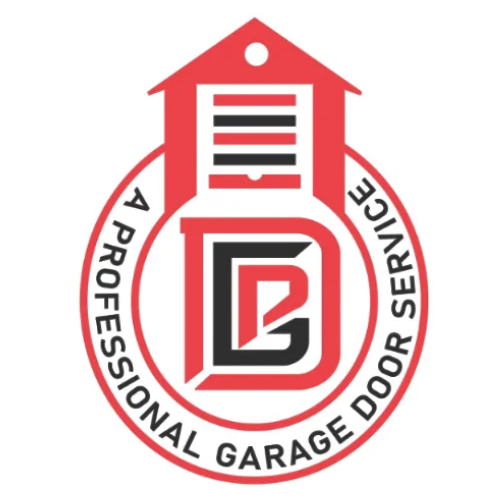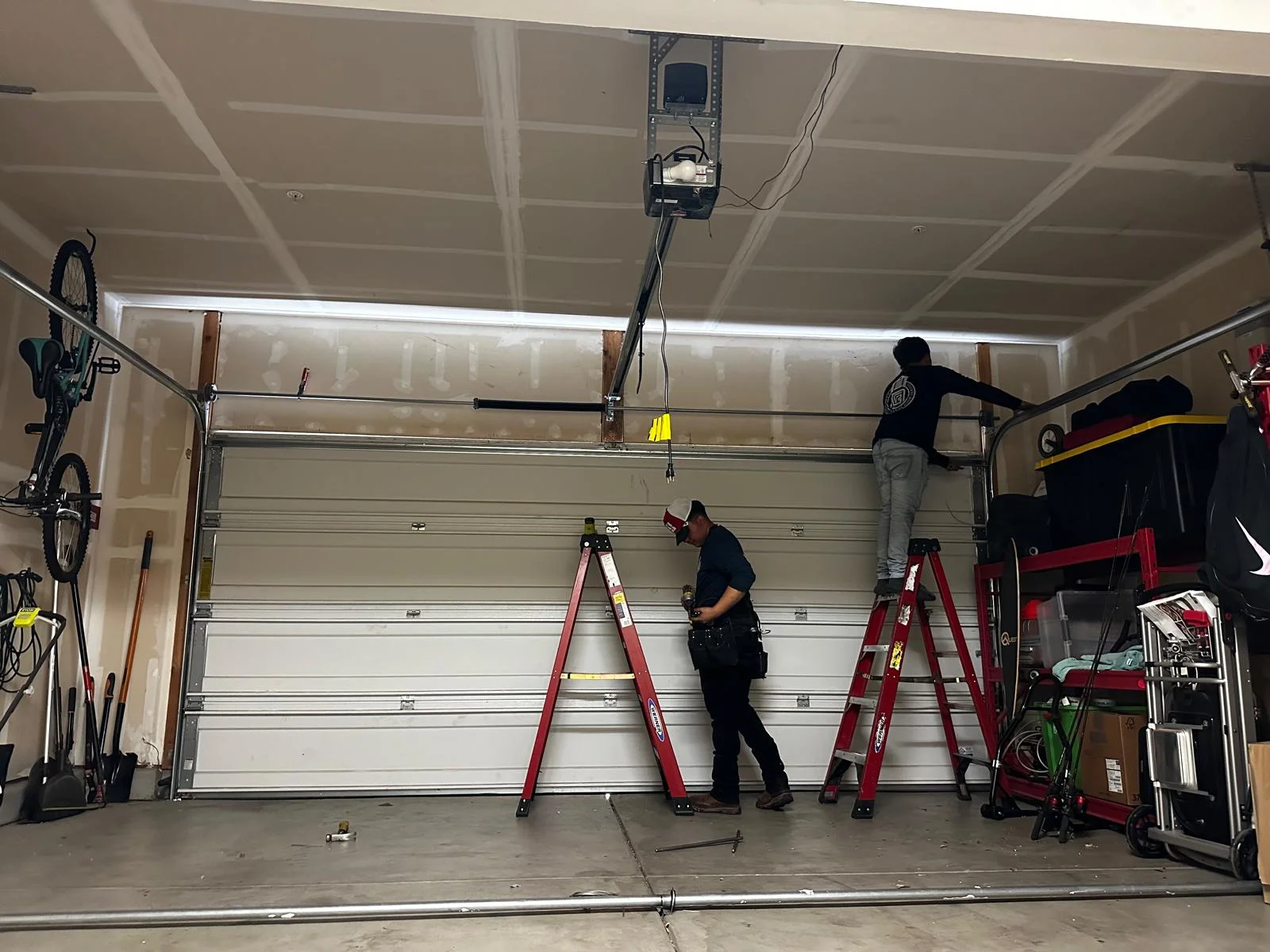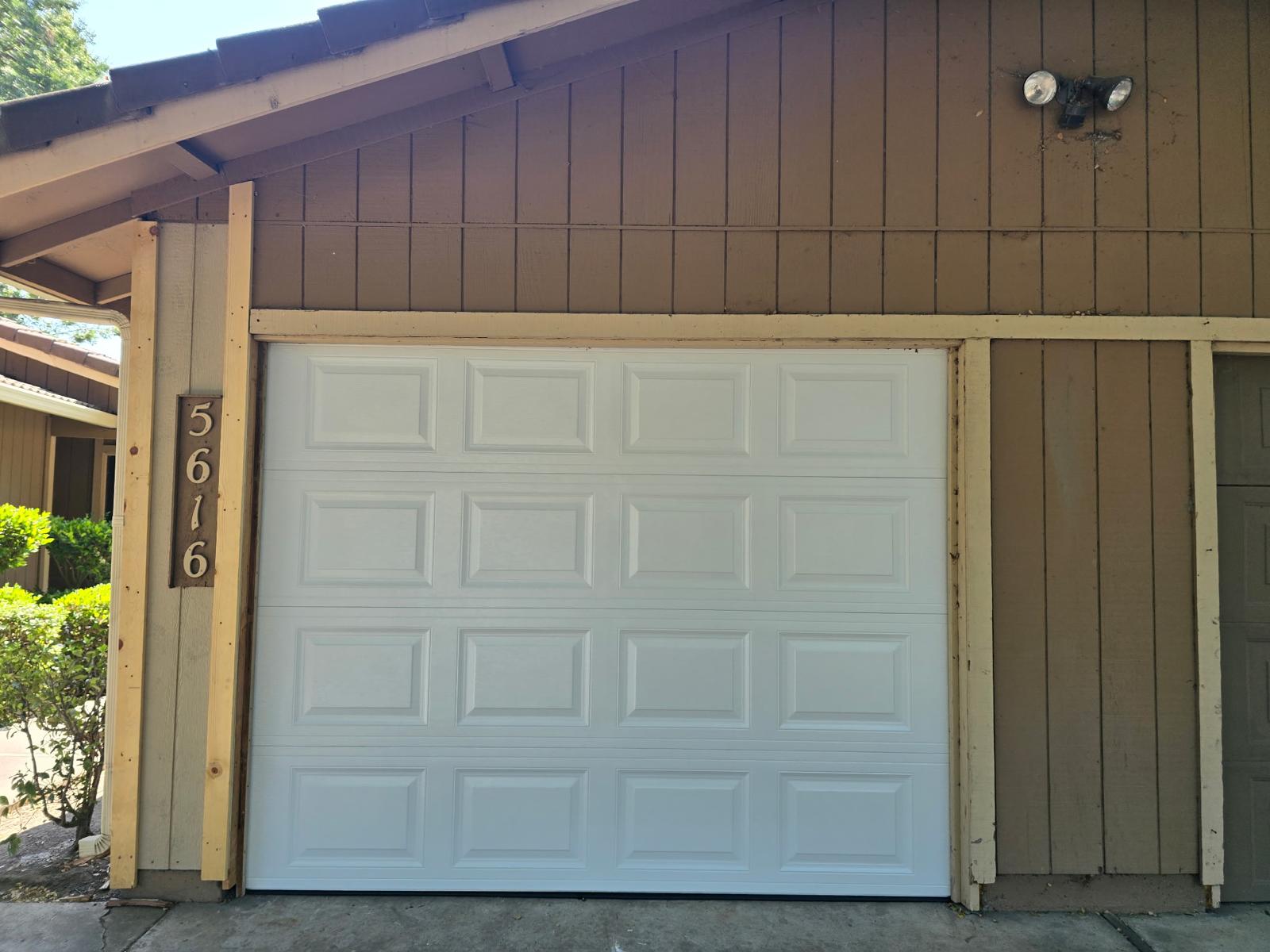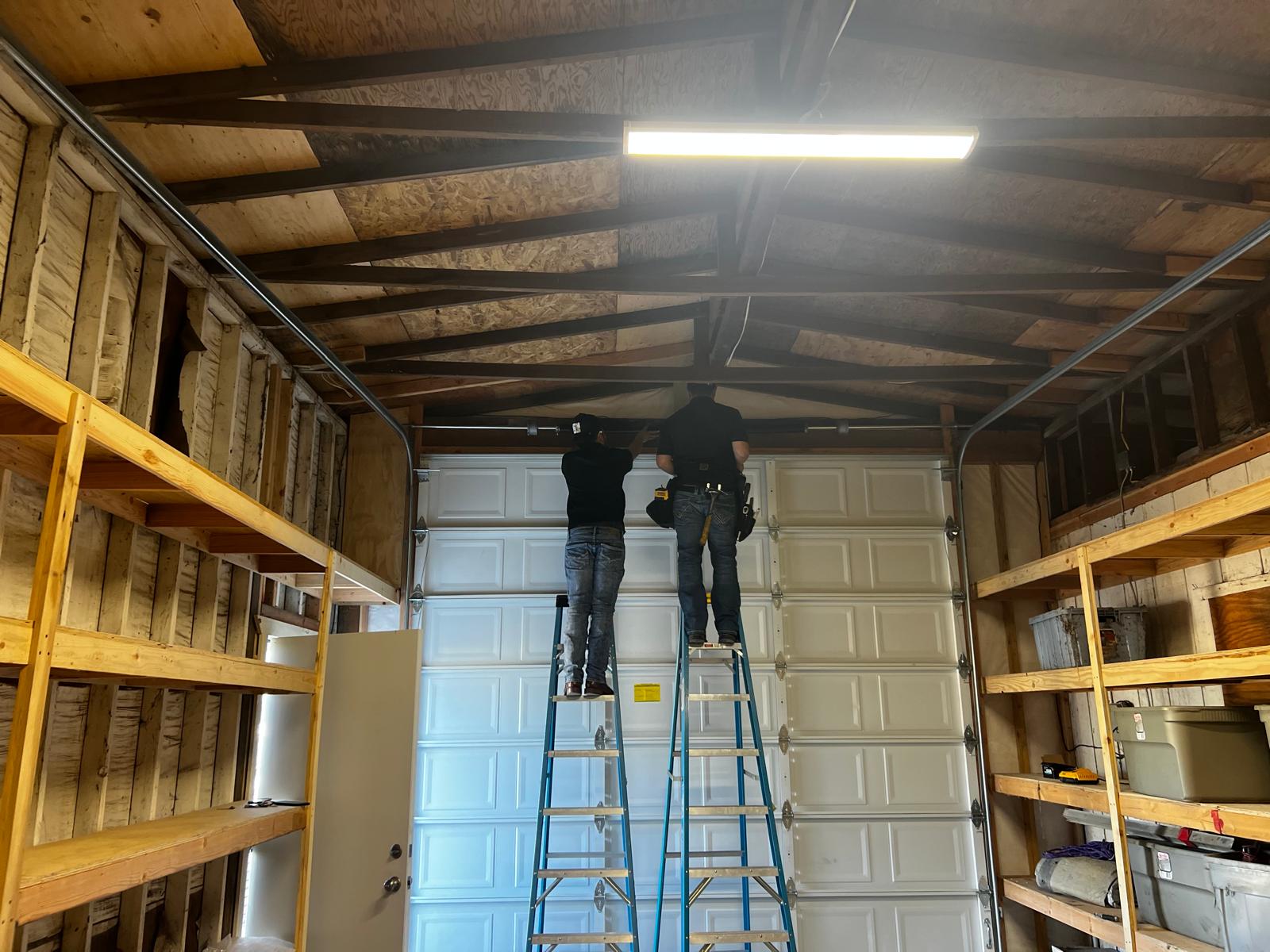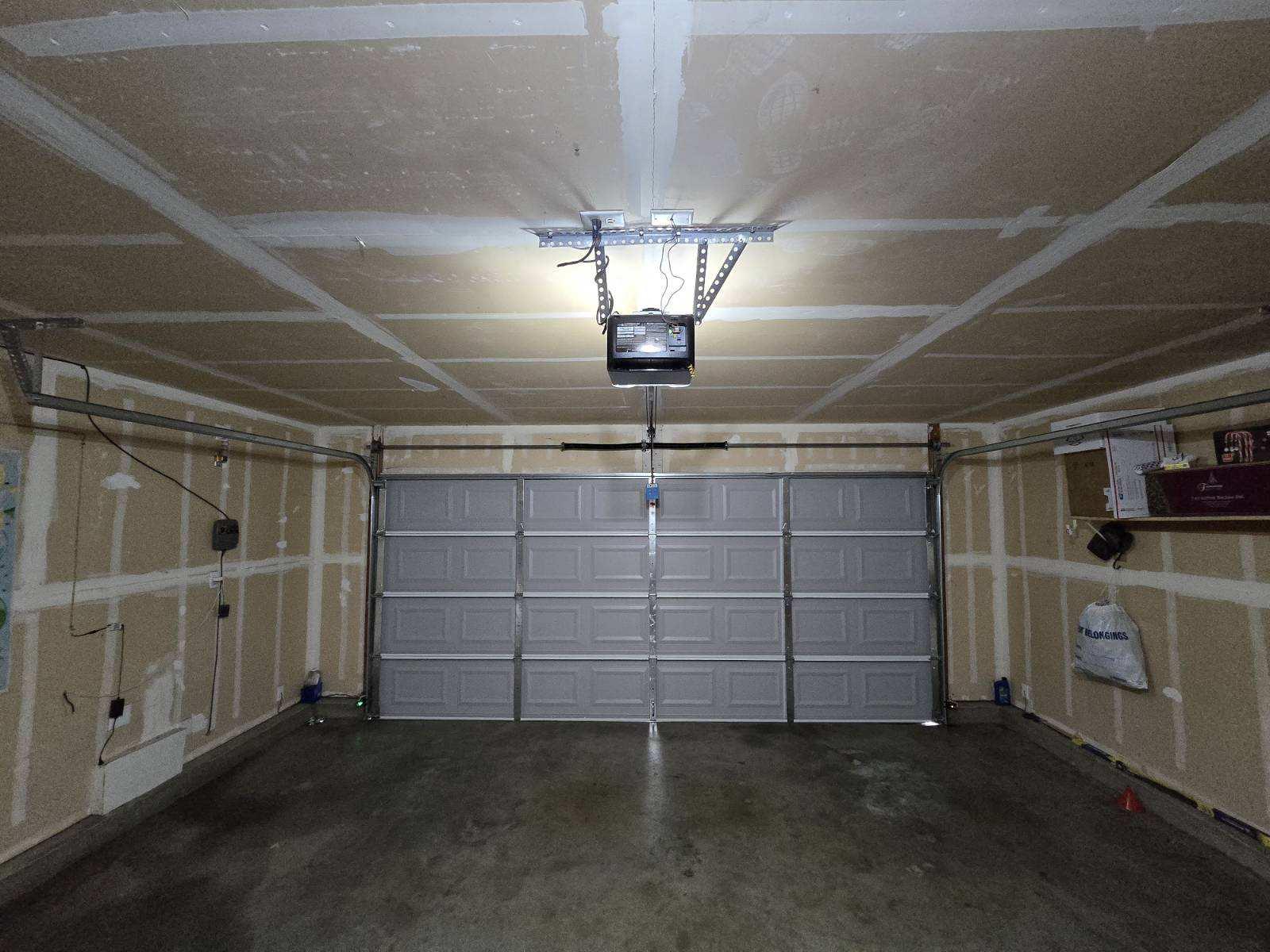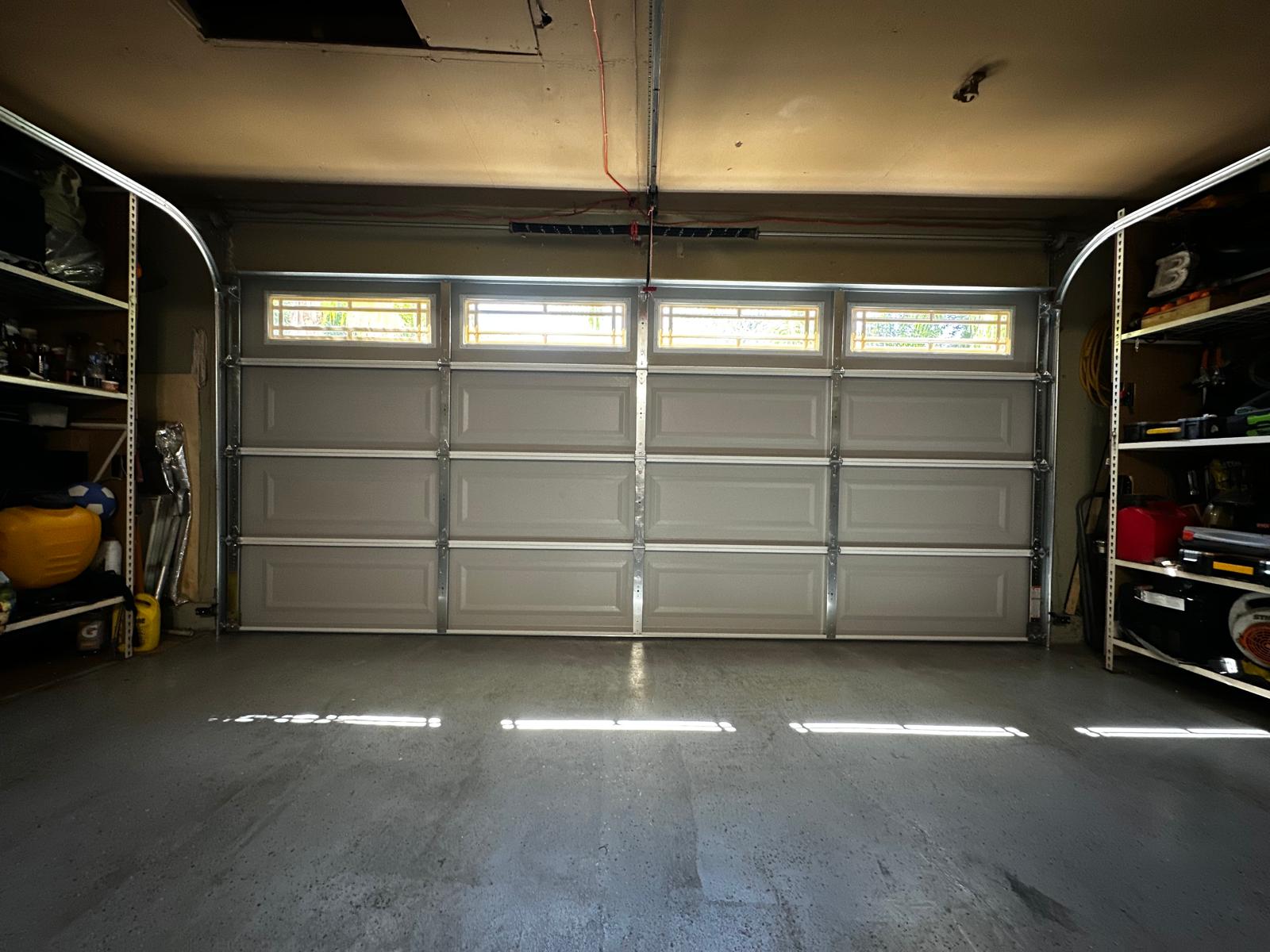Stockton • Weather Sealing
Heat waves, fall winds, and winter rain—Stockton garages see it all. This hands‑on guide shows you how to seal the door, sides, and floor for a cleaner, quieter, and more energy‑efficient space.
Cleaner & Drier
Keep rainwater, dust, and leaves out with an upgraded bottom seal and perimeter weatherstrip tuned for Stockton’s wind patterns.
Quieter Operation
Fresh seals reduce vibration and road noise—especially helpful on insulated steel doors along busy streets.
Energy Awareness
Better sealing limits heat gain in summer and protects stored items year‑round.
Why it matters in Stockton: hot, dry summers push dust under doors; autumn winds drive debris sideways; winter rains search for any gap along the threshold. A smart sealing plan prevents recurring messes and premature hardware wear.
1) Common Leak Points in Stockton Garages
Bottom seal & threshold
- Cracked or flattened rubber lets light and water in under the door.
- Uneven concrete creates channels for wind‑driven rain.
- Gaps enlarge after hot summers as rubber loses elasticity.
Side & top weatherstrip
- UV and heat make vinyl brittle; pieces break off and whistle in the wind.
- Loose fasteners or warped trim leave visible light gaps.
- Brush seals help in dusty alleys or near fields.
Panel joints & windows
- Older wood panels shrink; caulk lines split after heat cycles.
- Window gaskets harden, allowing drips at corners.
Floor & adjacent walls
- Small slab cracks funnel water to stored items.
- Unsealed wall penetrations (hose bibs, conduits) invite pests and drafts.
2) Weather Sealing Materials: Pros & Cons
| Material | Best Use | Pros | Considerations |
|---|---|---|---|
| EPDM Bottom Seal | Door bottom on uneven slabs | Flexible, durable, resists heat | Choose correct T‑style/retainer size for your door model |
| Vinyl Perimeter Strip | Top and sides of frame | Affordable, quick to install | UV exposure in Stockton can embrittle over time—inspect yearly |
| Brush Seal | Dusty environments / side gaps | Excellent for dust & small debris | Not a water barrier; pair with proper bottom seal |
| Threshold (PVC/Rubber) | Floor under the door | Creates raised dam, great for wind‑driven rain | Requires clean slab and correct adhesive; watch for trip hazard |
| Closed‑Cell Foam | Minor slab dips / panel joints | Good gap filler, quick fix | Shorter lifespan; plan a permanent solution |
| High‑Cycle Bottom Seal | High‑use residential or light commercial | Longer service life, better memory | Higher parts cost; saves labor over time |
3) Sealing the Door: Bottom, Sides & Top
Assess the current gaps
- With the door closed, look for light leaks along the bottom and sides.
- Slide a strip of paper: if it moves freely, the seal isn’t contacting the slab.
- Note any uneven concrete or dips where water runs.
Select the bottom seal
- Match the T‑style (single/double) to your retainer channel.
- For uneven slabs, choose a bulb or serrated profile with more give.
- In dusty alleys, pair with a floor threshold for better sealing.
Replace side & top weatherstrip
- Measure frame lengths; cut vinyl or brush seals with clean mitered corners.
- Fasten every 8–12” and gently preload against the door face for contact.
- In west‑facing doors, consider UV‑resistant materials.
Balance, travel & sensor check
- After sealing, verify the door auto‑reverses correctly—added friction can affect limits.
- Clean photo‑eyes; Stockton dust can cause false reversals.
- If movement strains or jerks, see track alignment first.
4) Floor Thresholds: Managing Water, Pests & Dust
A threshold is a low profile strip bonded to the slab that creates a raised seal line. In Stockton, it excels against wind‑driven rain and leaf litter blown under the door.
Installation checklist
- Clean and degrease the slab thoroughly; dry fully.
- Dry‑fit the threshold and mark the outline.
- Apply manufacturer adhesive; press evenly along the length.
- Close the door gently onto the threshold to set alignment.
- Avoid vehicle traffic until adhesive cures (check product label).
When a threshold helps most
- Driveway slopes toward the garage.
- Noticeable slab dips in the center or corners.
- Frequent sweeping from street dust or landscaping debris.
5) Seasonal Weatherproofing Plan for Stockton
Use this rotation to keep seals performing despite heat, wind, and winter moisture. It’s a quick routine that saves you emergency calls later.
| Season | What to Do | Why It Matters | DIY Time |
|---|---|---|---|
| Spring | Inspect bottom seal memory; replace if flattened. Clean side/top strips. Test auto‑reverse with a 2×4. | Preps for windy season; ensures safety after winter expansion/contraction. | 20–30 min |
| Summer | Light lubrication on hinges/rollers (garage‑door‑approved). Shade photo‑eyes if afternoon glare. | Reduces friction and false reversals; protects seals from heat. | 15–20 min |
| Fall | Install or inspect floor threshold; sweep channels; tighten perimeter fasteners. | Stops wind‑driven debris and early rains from entering. | 20–40 min |
| Winter | Check for water trails; add foam to minor dips; plan seal replacement if brittle or cracked. | Prevents moisture under storage and preserves opener health. | 15–30 min |
Pro tip: bundle sealing with a Regular Maintenance tune‑up to check balance, cables, and opener force after new seals are installed.
Troubleshooting: If Your Garage Still Feels Drafty or Damp
Drafts & dust after sealing
- Check for light gaps at corners—side strips may need more preload.
- Add brush seals on sides if dust is the main problem.
- Confirm track alignment; an out‑of‑square door never seals perfectly. See Track Alignment.
Moisture trails or puddles
- Observe after a moderate rain; identify entry points.
- Install a low‑profile threshold; re‑slope with epoxy only if needed.
- Seal slab cracks and wall penetrations around utilities.
6) When to Call a Pro (and Why It’s Worth It)
Sealing pairs best with correct door balance, clean tracks, and healthy rollers. If your garage door is unbalanced, seals won’t last and openers work harder.
- Door feels heavy, opens unevenly, or reverses without reason.
- Visible spring gap, frayed cables, or popped rollers.
- Water infiltration persists after replacing seals.
In these cases, combine sealing with a professional tune‑up. Explore Weather Sealing and Regular Maintenance for a complete fix.
Expected timelines
- Perimeter strips: 30–60 minutes
- Bottom seal swap: 20–40 minutes
- Threshold install: 45–75 minutes (plus cure time)
The Stockton Advantage: Seal Once, Maintain Year‑Round
Weather sealing is one of the highest‑impact upgrades for garages in Stockton: fewer cleanups after windy days, better protection during rains, and smoother daily use. Start with gaps you can see (bottom and sides), control water with a threshold if needed, then follow the seasonal plan to keep everything performing.
If you’d like a quick on‑site assessment—no fixed prices online, transparent quotes in person—our local team can pair sealing with a safety and balance check so your door runs reliably for years.
